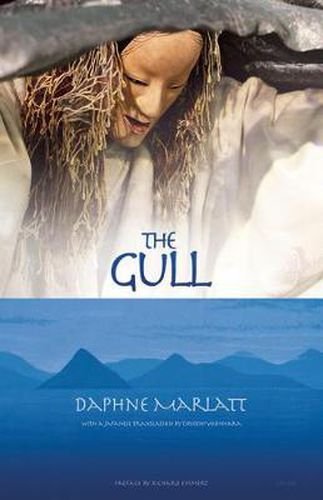Readings Newsletter
Become a Readings Member to make your shopping experience even easier.
Sign in or sign up for free!
You’re not far away from qualifying for FREE standard shipping within Australia
You’ve qualified for FREE standard shipping within Australia
The cart is loading…






Winner of the prestigious 2008 Uchimura Naoya Prize, The Gull is the first Canadian play staged in the ancient, ritualized tradition of Japanese Noh. Produced by Vancouver’s Pangaea Arts, and written by award-winning poet and novelist Daphne Marlatt, the play is set in 1950: wartime restrictions on interned Japanese Canadians have finally been lifted, allowing them to return to the coast. It is a dramatization of the historical link between the fishing town of Steveston, home to many of these first, second and third generation Japanese Canadians, and Mio, the coastal village in Wakayama from which many of their ancestors originally emigrated. Inspired by a ghost story a Nisei fisherman had told during Marlatt’s work on the history of Steveston in the 1970s, the ghost in the play is seen by one of the two fishermen as the spirit of his mother who had perished in the internment camps, and as a gull by the other. The iconic centre of the play, the gull is common to Japan and North America. Connected to a fishing superstition that if you see a seagull splashing in the waves it means a storm is coming, it also takes full advantage of the dense intertextuality and multiple meanings of the poetic language of classical Noh theatre. To be gulled is to be taken in, a key to the play’s storyline of a people deluded that their right to citizenship by birth would protect them, their homes and their families from the State. An international collaboration, The Gull’s premiere featured: Noh master Akira Matsui, declared an Important Intangible Cultural Asset by Japan in 1998, as the main actor; American Noh expert Richard Emmert who wrote the music; two masks created by Wakayama artist Hakuzan Kubo; and a troupe of professional Noh musicians from Japan.
$9.00 standard shipping within Australia
FREE standard shipping within Australia for orders over $100.00
Express & International shipping calculated at checkout
Winner of the prestigious 2008 Uchimura Naoya Prize, The Gull is the first Canadian play staged in the ancient, ritualized tradition of Japanese Noh. Produced by Vancouver’s Pangaea Arts, and written by award-winning poet and novelist Daphne Marlatt, the play is set in 1950: wartime restrictions on interned Japanese Canadians have finally been lifted, allowing them to return to the coast. It is a dramatization of the historical link between the fishing town of Steveston, home to many of these first, second and third generation Japanese Canadians, and Mio, the coastal village in Wakayama from which many of their ancestors originally emigrated. Inspired by a ghost story a Nisei fisherman had told during Marlatt’s work on the history of Steveston in the 1970s, the ghost in the play is seen by one of the two fishermen as the spirit of his mother who had perished in the internment camps, and as a gull by the other. The iconic centre of the play, the gull is common to Japan and North America. Connected to a fishing superstition that if you see a seagull splashing in the waves it means a storm is coming, it also takes full advantage of the dense intertextuality and multiple meanings of the poetic language of classical Noh theatre. To be gulled is to be taken in, a key to the play’s storyline of a people deluded that their right to citizenship by birth would protect them, their homes and their families from the State. An international collaboration, The Gull’s premiere featured: Noh master Akira Matsui, declared an Important Intangible Cultural Asset by Japan in 1998, as the main actor; American Noh expert Richard Emmert who wrote the music; two masks created by Wakayama artist Hakuzan Kubo; and a troupe of professional Noh musicians from Japan.